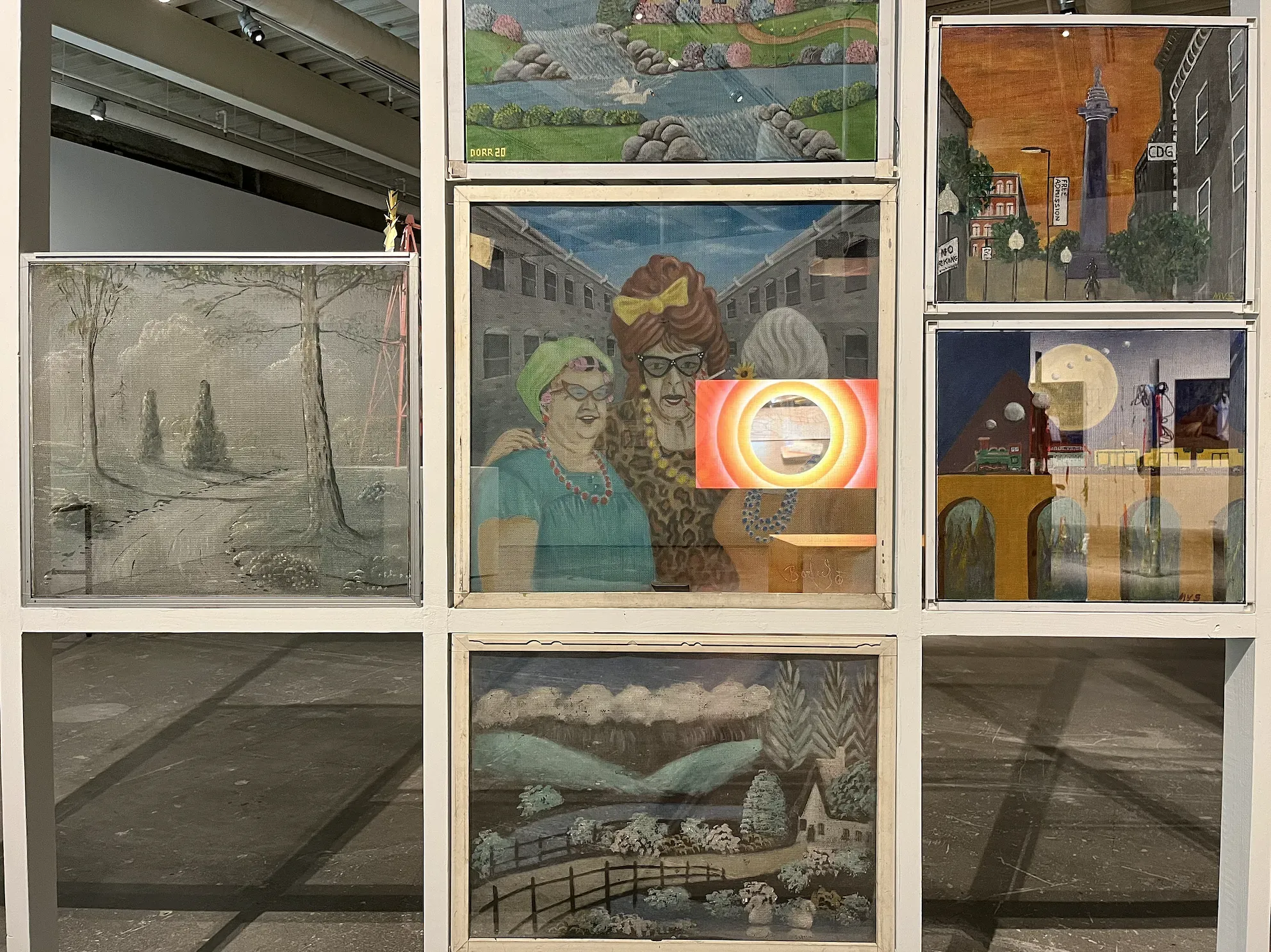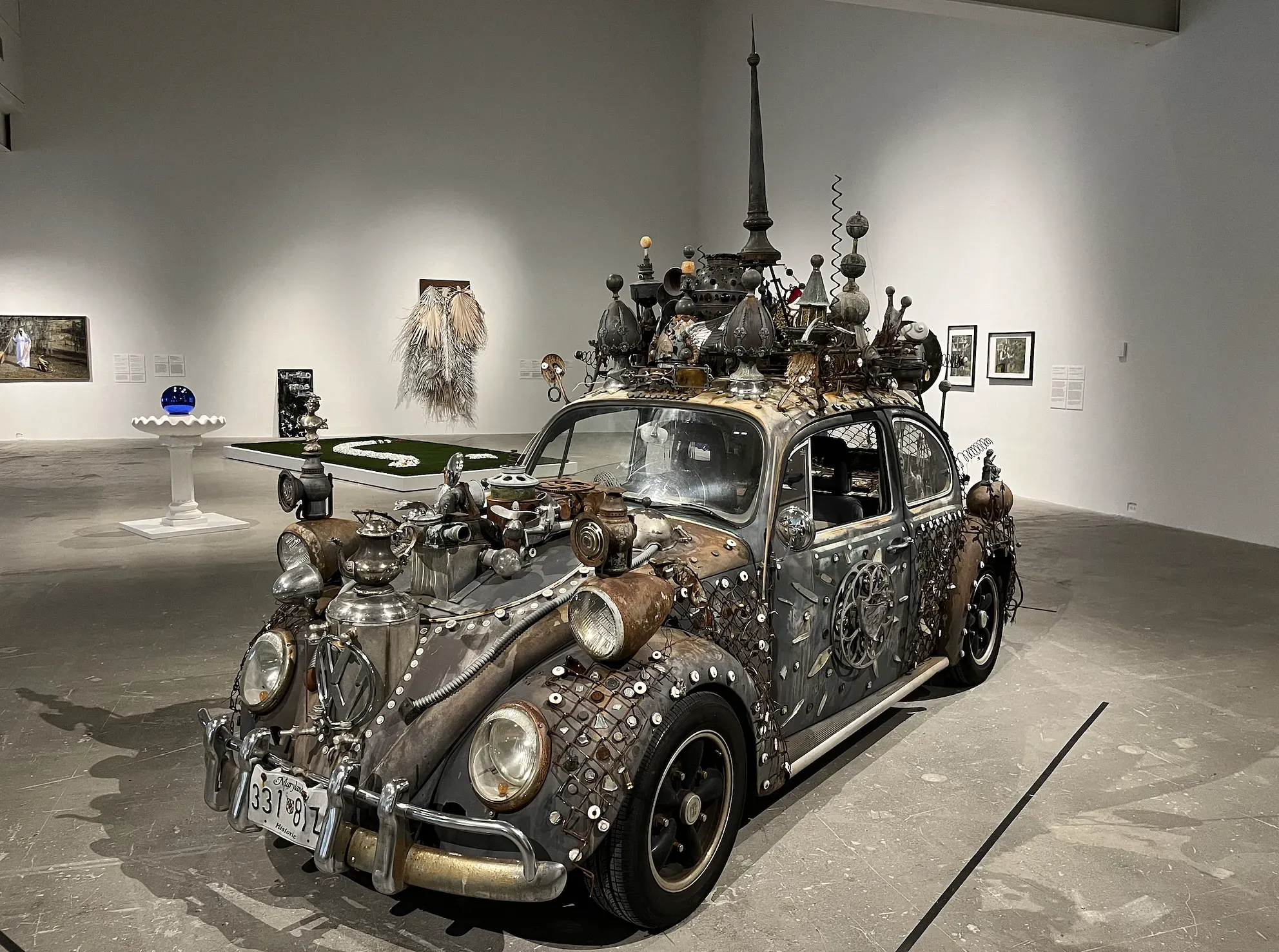
Where I Learned To Look: Art From The Yard
Institute of Contemporary Art
118 S. 36th St.
Philadelphia
Oct. 4, 2024
Clark Bedford moved his ancient, trash-packed Volkswagen out of his Maryland driveway — and into a contemporary art gallery.
“Art Car,” the junk-adorned car that Bedford built to bedazzle his otherwise boring suburban neighborhood, is part of the exhibit Where I Learned To Look: Art From The Yard, currently on display at University of Pennsylvania’s Institute of Contemporary Art.
The one-room show, curated by artist Josh T. Franco, is like a turbo-mode roadtrip across America.
The exhibit begins with Franco’s dioramic, immersive film of a Texan family building a shrine to an Aztec god in their backyard. A series of painted screens recalls the Baltimore tradition of painting mesh window protectors to allow both airflow and privacy. A row of photos of abandoned cars by Wendy Red Star printed on colorful fabric illustrates the material waste that decorates the Crow reservation. Another video casts riding and push lawn mowers as competitors, mashing up advertisements for the machinery with racing music and time lapses of flowers blooming and grass growing.

Then, of course, there’s “Art Car”, the drivable but stationary Volkswagen decorated with rusty found objects — teapots, sculptures of busts, old fencing. It is part of Bedford’s home sculpture garden known as “Vanadu,” named after “Xanadu,” the extravagant palace in Orson Welles’ Citizen Kane that portrays wealth as a facade for emptiness.
Bedford wrote in his artist statement that the car’s creation was catalyzed by the Victorian aesthetic of “horror vacui,” or fear of empty spaces.
In my mind, the “yard” is inextricably linked with the idea of the American “lawn.” In the States, trimmed turf is a status signal; it represents the degree of separation a homeowner has from the public. The bigger the lawn, the farther you are from the street. Empty space has become an ideal.
“Art Car” is the biggest piece in the show, and it’s the perhaps most accessible as a direct rejection of cookie-cutter housing developments.
The rest of the exhibit shows the myriad ways people inevitably turn empty space into meaning, whether or not that’s seen as legitimate by others.
I spent most of my time in the gallery rewatching a short film titled Modest Livelihood, made by Brian Jungen and Duane Linklater. The film observes two Indigenous people in British Columbia skinning a wild animal from start to finish. The name of the film is a phrase from a 1999 Canadian Supreme Court decision to limit First Nations’ treaty rights, including hunting and fishing quotas.
As the animal’s rib cage pooled with blood, and the men’s faces stared somberly from underneath their fur caps, I saw the art of asserting one’s right to their land.
Though the lawn has in many ways killed culture in its takeover, Art From The Yard reminded me of the power people have to take ownership over what belongs to them.
Even if I saw these visions in a gallery, it’s all inspired by creativity constructed out in the real world. Every time I walk around the block, I find myself focused mostly on the suffering I see in the streets. But the next time I need a little fresh air, I might take to my landlord’s lawn to start building my own Xanadu.
NEXT:
Art From The Yard remains on display through Dec. 1. Find out more here.






